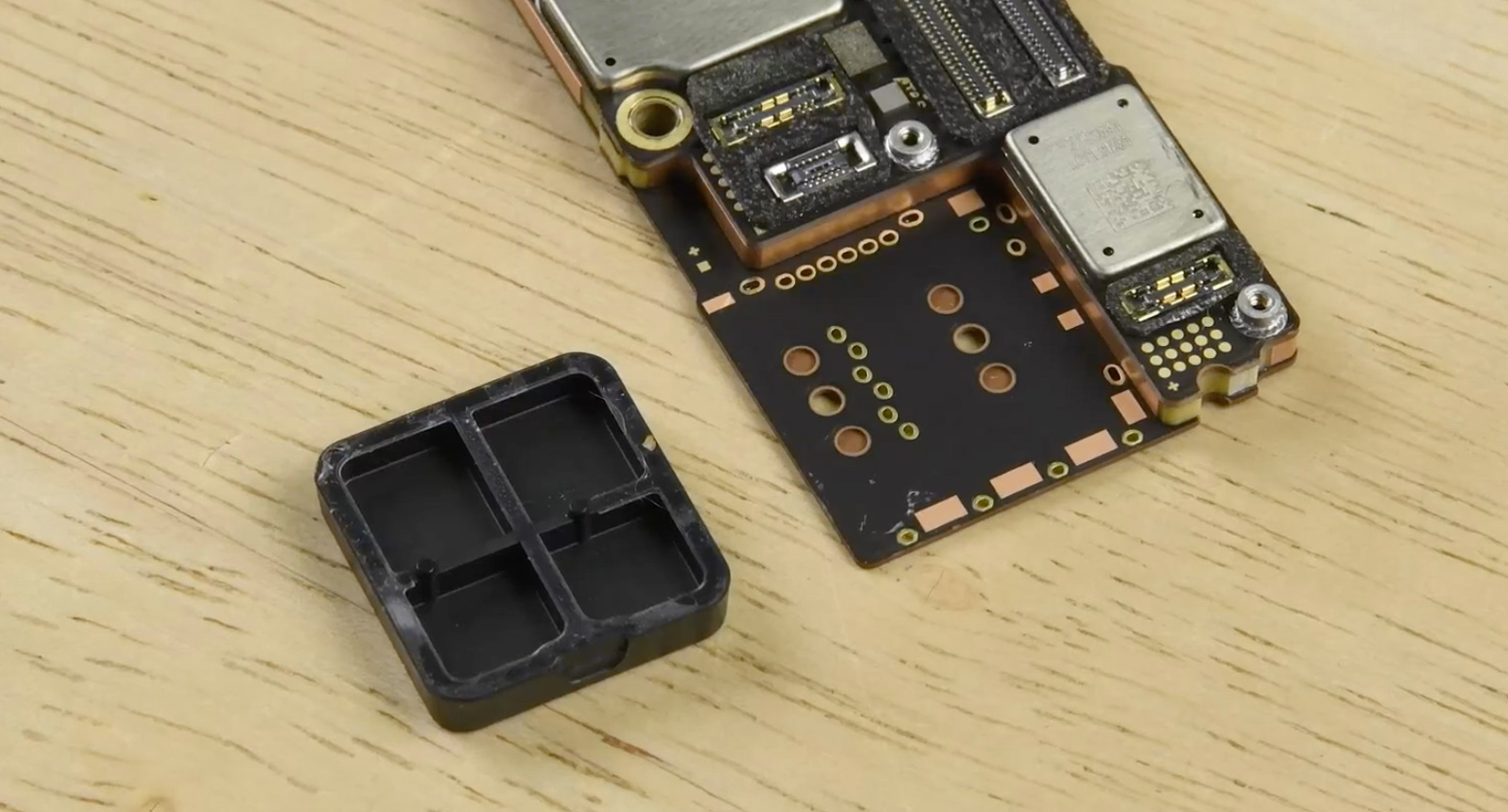
Repair website iFixit today shared an in-depth teardown of the iPhone 14 Pro Max, providing a closer look at the device's internals. Notably, the teardown includes a photo of the plastic spacer that replaced the SIM card tray on the U.S. model.

All four iPhone 14 models sold in the U.S. no longer have a physical SIM card tray and rely entirely on digital eSIMs. The teardown confirms that Apple is not using the internal space freed up by the tray's removal for any other component or added functionality, and instead filled in the gap with a square piece of plastic. Outside of the U.S., all iPhone 14 models are still equipped with a SIM card tray in this space.
As seen in previous teardowns, iFixit provided close-up images of the iPhone 14 Pro Max's logic board, which is equipped with a faster A16 Bionic chip and Qualcomm's Snapdragon X65 modem that provides both 5G and satellite connectivity.
While the standard iPhone 14 and iPhone 14 Plus can be opened from the back side, and feature a more repairable design with an easily removable display and back glass panel, these design changes do not extend to the Pro models. The teardown shows that the iPhone 14 Pro Max continues to open from the front and does not have removable back glass. The internal design of the device is largely unchanged from the iPhone 13 Pro Max.
The lack of removable back glass on iPhone 14 Pro models makes repairs more expensive. Without AppleCare+, Apple Stores charge $499 to $549 to fix cracked rear glass on iPhone 14 Pro models, compared to $169 to $199 for standard iPhone 14 models.
iFixit shared a teardown of the iPhone 14 earlier this week.
Article Link: iPhone 14 Pro Max Teardown Provides Closer Look at Unused SIM Tray Area on U.S. Model and More


